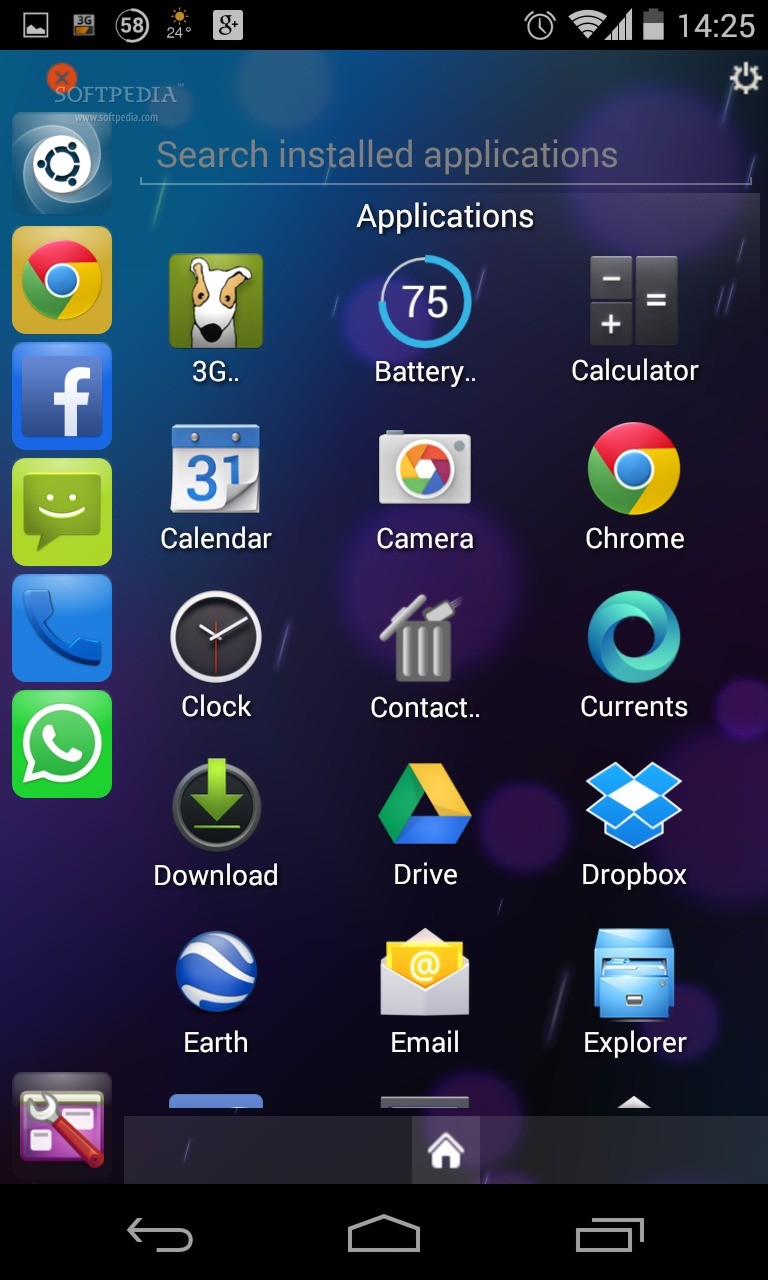
Ubuntu For Android Phones Download The AOSP
Android competes with Apple's iOS (for iPhone/iPad), Microsoft's Windows Phone, and many other proprietary mobile OSes.Android as a Service. Now, we will need to download the AOSP kernel source code from googlesources using repo command as below, currenly we are compiling most recent branch as common-android-4.19 , you can find most recent versions at HERE.Android is an Operating System for mobile devices developed by Google, which is built upon Linux kernel. Sudo apt-get install repo gcc. Dependency : you must have gcc and repo installed on your Ubuntu.

For programmers and developers, visit to download the SDK, Android Training, API Guides and API documentation. Kotlin will not be discussed in this article.The mother site for Android is. As you are familiar with Java, you probably should start in Java (many of the examples out there are written in Java), and then move into Kotlin. However, they run on Android's own Java Virtual Machine, called Dalvik Virtual Machine (DVM) (instead of JDK's JVM) which is optimized to operate on the small and mobile devices.In May 2017, Google announced support for a new Kotlin programming language.
Before installing Android SDK, you need to install Java Development Kit (JDK). Step 0: Pre-Installation Check List You probably need a fairly decent PC (with 8GB RAM) and 10GB of free disk space to run the Android emulator!!! Running on "actual" Android phone/tablet requires much lesser resources. It takes times - from 30 minutes to n hours to forever - depending on your luck, your programming knowledge, and your PC.
Do NOT stare at your screen or at the ceiling. The installation and many operations take a LONG time to complete. Uninstall older version(s) of "Android Studio" and "Android SDK", if any. You can check your JDK version with command " javac -version". Ensure that your JDK is at or above 1.8.
Otherwise, Follow the steps HERE. Check that environment variable JAVA_HOME is set to the JDK installation directory via command " set JAVA_HOME". Android SDK (Software Development Kit) (about 5 GB) for developing and testing Android apps.Reference: "Install Android Studio". Android Studio (IDE) (about 1 GB), which is an Integrated Development Environment (IDE) based on IntelliJ (a popular Java IDE) and For developers, check out the "Developer Guides".
In "Choose Start Menu Folder", accept the default ⇒ Install. In "Configuration Settings Install Location", accept the default " C:\Program Files\Android\Android Studio". In "Choose Components", select "Android Studio" and "Android Virtual Device" (space required: 2.7GB). Run the downloaded installer ⇒ You may watch a short video. Goto "Android Studio" ⇒ Click "Download Android Studio 4.1.x for Windows 64-bit (896MiB)", e.g., " android-studio-ide-201.xxxxxxx-windows.exe".
Drag and drop Android Studio into the "Applications" folder. Dmg" installation file ⇒ You may watch a short video. Launch the downloaded ". Goto "Android Developer" ⇒ Select "Get Android Studio" ⇒ "Download Android Studio 4.1.x for macOS (762MB)", e.g., " android-studio-ide-201.xxxxxxx-mac.dmg". Check the system requirements e.g., for macOS 10.10 to 10.14, recommended 8GB of RAM, 4GB of disk space, and 1280x800 minimum screen resolution.

Take note that the " AppData" is a hidden directory. (For Windows) Use "File Explorer" to check the SDK installed directory. ⇒ Finish ⇒ Wait ⇒ Wait ⇒ Wait ⇒ Wait ⇒ Wait ⇒ Wait. More info.)Google APIs Intel x86 Atom System Image: 1.15 GBIntel x86 Emulator Accelerator (HAXM installer): 2.63 MB In "SDK Components Setup", make sure that "Android Virtual Device" is selected and take note of the SDK directory (by default c:\Users\ username\AppData\Local\Android\Sdk for Windows, " ~/Library/Android/sdk" for macOS):SDK Folder: C:\Users\xxxxxxxx\AppData\Local\Android\SdkJDK Location: C:\Program Files\Android\Android Studio\jre (Note: Gradle may be using JAVA_HOME when invoked from command line. In "Select UI Theme", choose one that you like (or default).
Step 1: Create a New Android Project Read "Build your first app". I shall assume that you have some basic knowledge of Java and XML.Take note that Android emulator is slow - VERY VERY VERY SLOW!!! Be Patient!!! Hello-World Step 0: ReadGoto "Android Guides". Intel x86 Emulator Accelerator (HAXM installer) (7.5.6)Android apps are written in Java, and use XML extensively. Also use "Android Studio" to check the SDK packages installed by selecting "Configure" (at the bottom of Android Studio) ⇒ "SDK Manager" ⇒ "Android SDK" (sidebar):
Once the progress bar indicates completion, a hello-world app is created by default.Step 2: Setup Emulator (aka Android Virtual Device or AVD)To run your Android app under an emulator, you need to first create an Android Virtual Devices (AVD). If you see "2 processes running", you can click on it to see the details. Watch the "progress bar" at the bottom status bar and Zzzzzzzzz. Be patient! It could take a few minutes to set up your first app. In "Configure your project" ⇒ Set "Name" to "Hello Android" (this will be the "Title" in your phone's app menu) ⇒ The "Package name" and "Save Location" will be updated automatically ⇒ In "Language", select "Java" ⇒ Leave the "Minimum API Level" and the rest to default ⇒ Finish. In "Select a Project Template" ⇒ select "Phone and Tablet" tab ⇒ "Empty Activity" ⇒ Next.
See "Common Errors" below if you cannot find "AVD manager". In Android studio, select "Tools" ⇒ Android ⇒ AVD Manager. You can create AVDs to emulate different devices (e.g., phone/tablet, android version, screen size, and etc.).
If you see " VT-x is disabled in BIOS": Check your BIOS setting to ensure that "Virtualization Technology" is enabled. In "Select a System Image" ⇒ Use the default (without "Download" unless you want to wait for another hour) ⇒ Next. In "Choose a device definition" ⇒ In "Category", choose "Phone" ⇒ In "Name", choose "Pixel XL" or anyone that there is NO icon under "Play Store" ⇒ Next. Skip the rest of the steps (unless you want to create your own virtual devices).
Google " Your-PC-brand-and-model enter BIOS setup". This is machine dependent.


 0 kommentar(er)
0 kommentar(er)
